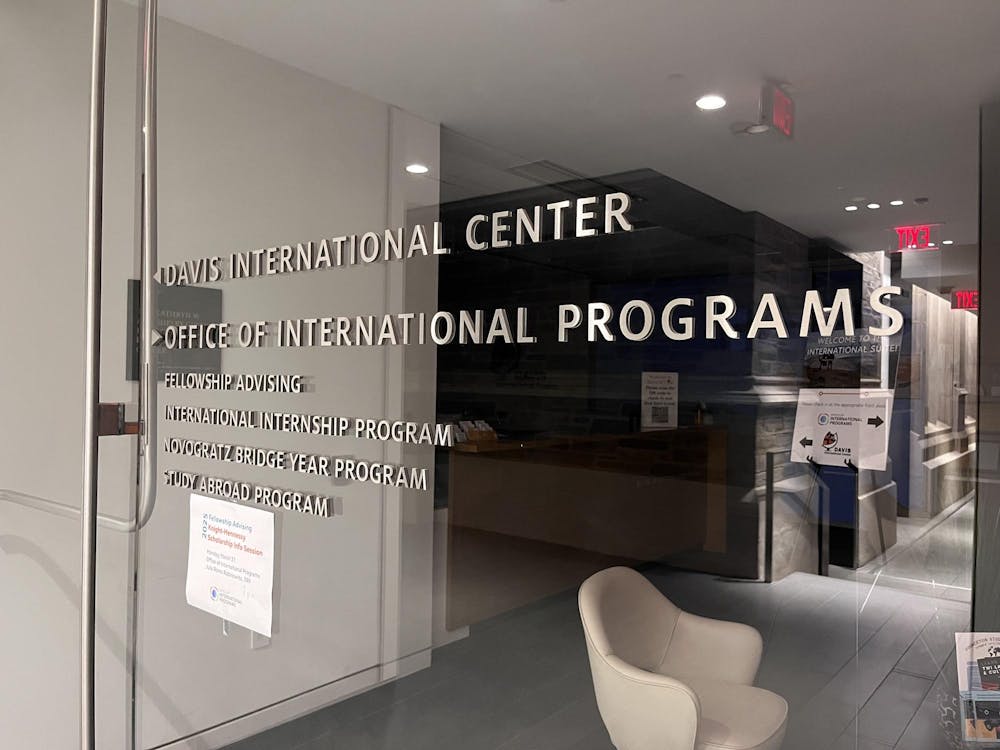“It’s a happy, but unexpected, position to be in,” English departmental representative Jeff Dolven said of the class’ huge enrollment. “It’s been many years since we’ve had anything as large.”
According to the Registrar’s online database, next spring’s children’s literature course is the most popular class since at least spring 2008. ECO 100: Introduction to Microeconomics, which typically attracts the most students of any course each semester, has not exceeded 360 students in a semester in the same period.
Initially, the English department did not set an upper limit to the number of students in next spring’s children’s literature class, but the department was forced to cap enrollment due to space constraints.
“A cap was set [Tuesday] night at 450 students, and that is the capacity of the largest lecture hall on campus, McCosh 50,” Gleason said. “We only put the cap when we realized we couldn’t place [the class] anywhere else anymore.”
The class reached capacity within minutes Wednesday morning as sophomores registered for classes through SCORE. “There were a little over 400 people signed up when SCORE opened at 7:30. It was filled by 7:45,” Gleason noted.
The diseconomies of scale
The unusually large size of the lecture component of the course does not worry Gleason and the rest of the department. “I’m not sure there’s an ideal number for the course. I think it will really work well at any number,” he said, adding that there are enough well-qualified, advanced graduate students to lead precepts.
Making sure that precepts are uniform across such a populated class might be a challenge, though. “I think it’s just going to be the additional difficulty of making sure every preceptor is on the same page, that responses to written work will be the same across precepts,” Dolven noted.

In capping course enrollment, the English department has decided against further enlargement of the class via simulcast technology, which would allow students in multiple rooms to see the lecture. The University has adopted this strategy in the past for especially popular public lectures but has yet to implement it in undergraduate classes.
“We prefer that everyone be in the same room,” Dolven explained. “Something about the lecture experience is lost over TV.”
Capping prevents underclassmen from enrolling
Gleason said he was “disappointed” that enforcing an enrollment cap limits the number of underclassmen currently included in the roster. “I would have been delighted to have more freshmen and sophomores in lecture,” he added.

Upperclassmen, who pick classes ahead of other undergraduates, began registering on SCORE last week. This left only a few vacancies in ENG 335, all of which were filled by sophomores.
But Dolven assured underclassmen that “we do intend to offer the course the year after next,” adding, “Sophomores and freshmen who want to take the course will be able to get it before they graduate.”
“Hopefully, they’ll still be interested two years from now,” Gleason said.
Reflections on size
Despite the more basic level of the literature discussed in ENG 335, Dolven said he does not think the course will be easier than any other 300-level courses that the English department offers. “I think Professor Gleason wants people to think hard about these books,” he said.
Gleason said that it is good that his course, through its popularity, will draw on undergraduates in various departments. “There’s a great appeal for us to have students from the English department and from other departments from the campus,” he noted.
The diversity provided by students from different academic backgrounds, in addition to the appeal of analyzing works that were childhood favorites, may offer another academic dimension for ENG 335 students, Dolven added.
“The number of people interested in the course is a question the course itself might study,” he said.







